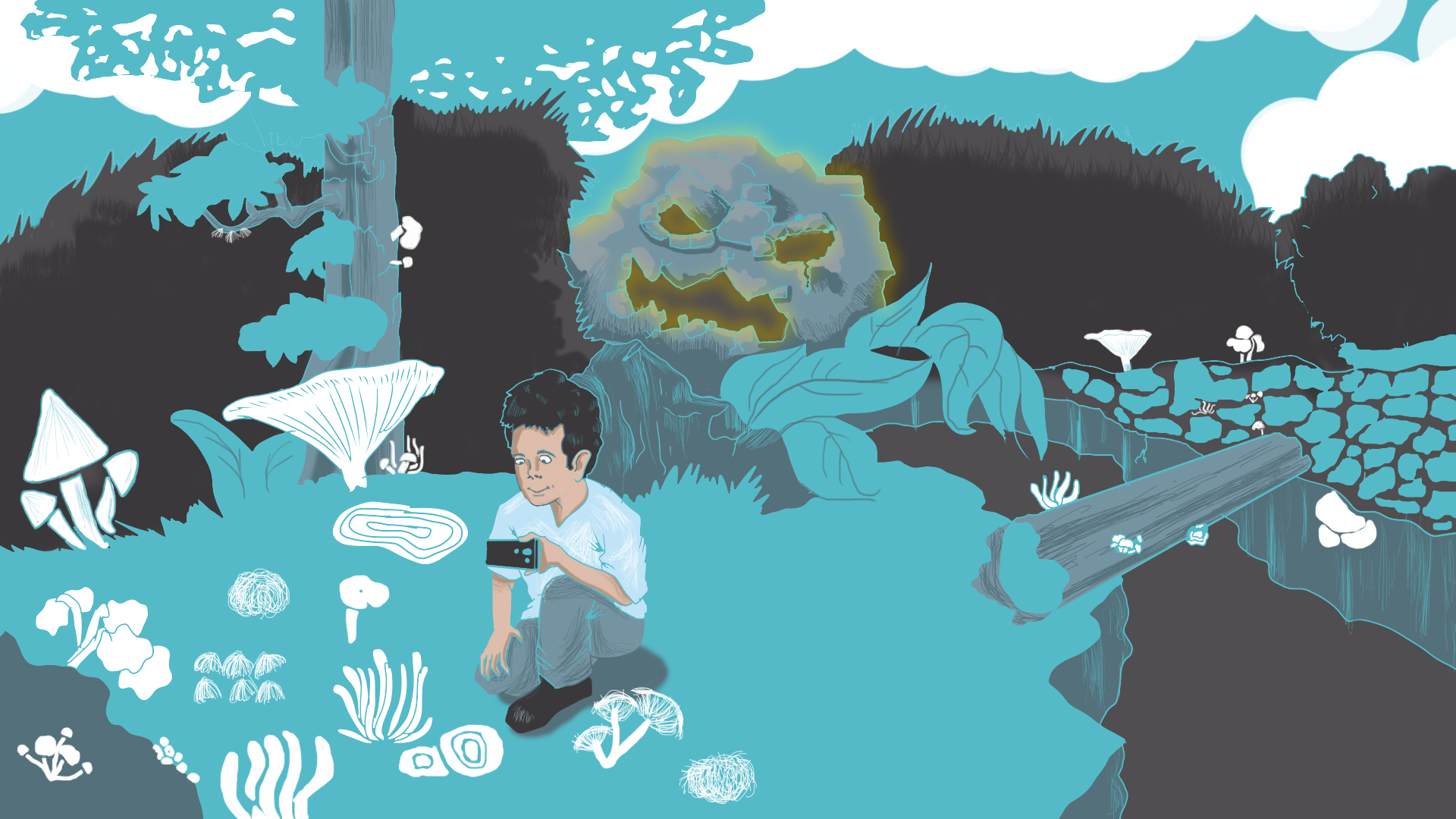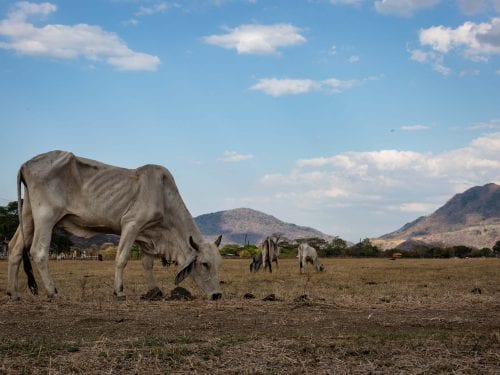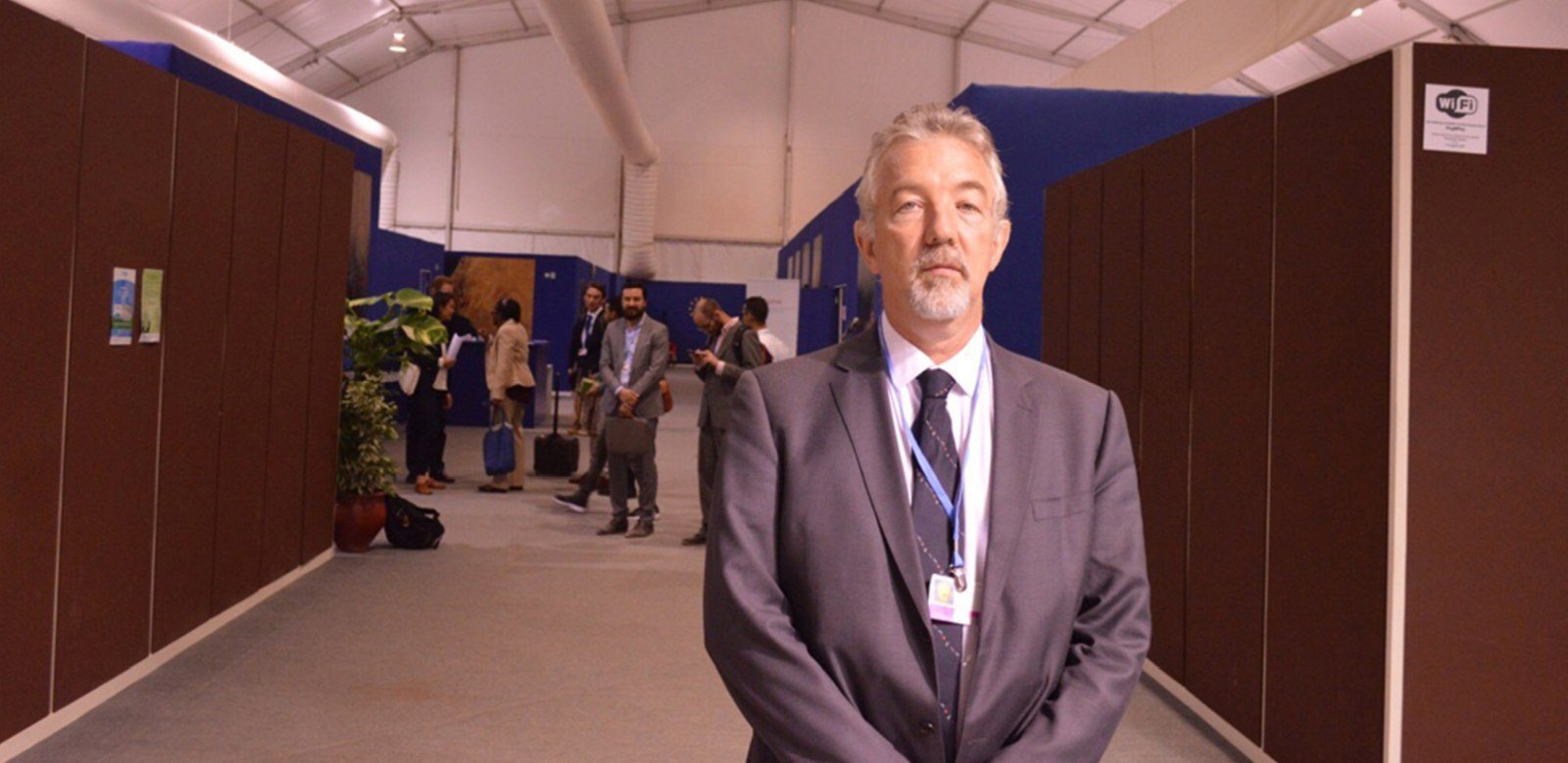

“If you knew Time as well as I do, you wouldn’t talk about wasting it,” says the Mad Hatter in “Alice in Wonderland.” That novel by Lewis Carrol is full of metaphorical dialogues and surreal scenarios.
Like Alice, there is an 11-year-old boy in Cañas Dulces of Liberia who immerses himself in landscapes lined with mushrooms during the rainy season.
Guillermo Garcia visits the property behind his house to study them and take photos that he later uploads to his Instagram account. He probably “knows Time well,” as the Hatter put it, not wasting time if he wants to learn more about them, before climate change continues to threaten them.
A School in the Forest
A couple of years ago, when he was in fourth grade, Guillermo joined the Biological Education Program (PEB- Programa de Educación Biológica) of the Guanacaste Conservation Area (ACG- Área de Conservación Guanacaste). The Cañas Dulces School that he attends is one of 32 institutions participating in PEB.
PEB initiated in 1986 so that all the boys and girls who study in the schools around the protected area can learn about biology firsthand in a “natural classroom.”
“The idea of turning protected areas into a classroom is the thought that in the future they’re not going to burn or harm their own school,” explained one of the program’s instructors, Eduardo Artavia.
PEB organizes four tours a year for three consecutive years, with fourth, fifth and sixth grade students to teach them basic knowledge of conservation biology.
Each of these tours has a specific theme that goes along with the school curriculum, so there are also workshops with teachers and parents.
Although the visits to Santa Rosa National Park and Junquillal Bay were the ones that awakened Guillermo’s interest in the environment, it was the trips to the forest near his house with his mother that put him in contact with fungi: a kingdom as fascinating as it is unknown.
Whenever Guillermo goes out exploring with his mother, they wear boots to protect them from the terciopelo snakes they have seen and they take their cell phones to take pictures, which they then upload to social networks for help identifying them.
Ver esta publicación en Instagram
Some imbalances in nature could destroy the green classroom where a mother and her child learn.
That’s why Artavia includes climate change topics in each PEB tour, so that students understand how it affects different ecosystems. This instructor said that it’s been a challenge to explain the changes in ecosystems to children between the ages of 10 and 12.
“We give examples so they at least start to get an idea of the magnitude. Like that of the coat, we make them walk with a lot of sweaters on to simulate greenhouse gases and global warming,” explained Artavia.
PEB is currently finishing preparing a brochure on climate change for public school teachers.
In addition to what Guillermo has learned in this program, he does research on the Internet to learn more about the kingdom that interests him so much, about which there are still many unanswered questions.
Flora, Fauna and Fungi?
“If it’s extremely hot, global warming increases and the mushrooms are going to die because they need moisture,” said Guillermo, explaining his impression of fungi and climate change. This sixth-grade student doesn’t have enough data to support his perception, but biologists who study this topic in depth have the same problem.
Luis Fernando Ledezma is a biologist with Funga Conservation, an organization that endeavors to disseminate information about fungi in the country. According to Ledezma, we know very little about the consequences that climate change is having on this kingdom, not only in Costa Rica but also worldwide.
The 2018 State of the World’s Mushrooms report by The Royal Botanic Garden, Kew points out that there are still unanswered questions like how does climate change affect the growth and activity of mushrooms? And there are information gaps in long-term, large-scale, and tropical climate data.
This same report indicates that there is evidence of some manifestations of climate change in mushrooms and their habitats worldwide, such as that reproduction, geographical distribution and physiology have changed in a noticeable way in recent decades.
Julieta Carranza, a biologist from the University of Costa Rica (UCR), affirmed that there is no project or research in Costa Rica that has followed any species of fungi for more than 10 years to determine if any have been disappearing.
She also explained that there are many variables that affect the appearance of mushrooms so it’s hard to say that climate change is the cause of some species not appearing during any of the years of study.
Both Carranza and Ledezma said that knowledge of mushrooms in Costa Rica is still lacking.
“If you don’t know the importance of an organism, you can’t understand why they should be preserved. Everything is interconnected on our planet and each organism has a special function that it performs to maintain this balance,” Carranza commented.
Both professionals attested that mushrooms are extremely complex structures that generally live underground and even inside of other plants.
Normally, the parts of them that we are able to see are their fruit or the structure that they use to reproduce, the well-known umbrella-like shape on a small stem. But beneath them, there is an immense network that goes unnoticed by our eyes.
Although we often can’t see them, they are there and are of great importance for the decomposition of plants and animals, allowing the nutrients to return to the soil. They also form important partnerships with plants and other organisms that need them to survive. Carranza affirms that without them, “life as we know it wouldn’t exist.”
The opposite scenario is just as dangerous for our ecosystems: the increased aggressiveness of some mushroom species.
Climate change weakens plants and animals that can host fungi, so they become more successful at attacking those species.
“There are fungi that parasitize plants of economic importance [using them as food without actually killing them], and it has been found that more and more plants are vulnerable to being parasitized, rice production, for example,” commented Ledezma. “It’s not like mushrooms are going to kill the world or save it. It’s understanding the many benefits that involves understanding them more in depth,” he added.
Understanding mushrooms better could be the solution to several big problems, Ledezma explained. They can be used to clean heavy metals in contamination situations. They also have the ability to replace plastic, which affects entire ecosystems, or even replace agrochemicals through biological control.
“The more trained farmers are, the better they understand what affects their crops, the more tools they will have to adapt to what comes up, which is going to be inevitable,” the biologist concluded.
Guillermo is waiting for the rains to return so he can immerse himself in his landscape of mushrooms again. He’s also waiting patiently for the PEB classes to resume, when it becomes possible with the pandemic. In the meantime, he takes advantage of time searching Google and YouTube for information that will continue to show him his path to one day becoming a biologist.
Eduardo, his instructor, recognizes the importance of Guillermo and many more students recognizing the risk of climate change, but without making them feel a sense of helplessness.
“We try to make them see what is happening and that it is urgent, but that they can do something, and that it’s up to them to do it. If it’s not them, the future is dark.”







Comments